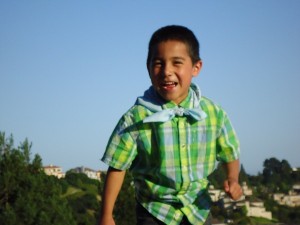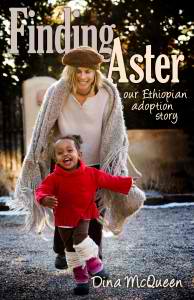If you’re reading this blog for the first time, you should know that I’m a white adoptive mother to two children born in Guatemala. My daughter, Olivia, is almost 9; my son, Mateo, is 6. Olivia is indigenous Maya; Mateo is what Guatemalans call “Ladino,” meaning his heritage is Hispanic. Each has brown skin; one darker, one lighter. Our family discusses skin color often; see two previous blog posts, Peach and Brown.
On Friday afternoon, as he climbed into the car after school, Mateo asked me “Can brown people marry white people?”
“Of course they can,” I said. “You can marry someone with any skin color.” I skipped my usual speech about marriage, which includes a requirement for love, college graduation, money in the bank, maturity, self-awareness, etc. etc. This conversation was about something else.
I continued, “Did someone say you couldn’t, because you’re brown?” Mateo nodded, looking miserable. I paused and took a deep breath. “Another kid? Or a grown-up?”
“Another kid,” Mateo said. (And here I will disguise the child’s identity.) “X.”
Why am I writing to tell you about this? Because I want you to know that, yes, even here in Marin County, Northern California, which considers itself one of the most enlightened, educated places on earth, another kid said those words to my 6-year-old son. And I’m guessing X didn’t make it up out of thin air. He must have heard it from an adult.
On May 11, NPR ran a great “All Things Considered” program that really resonated for me: The Parenting Dilemmas of Transracial Adoption. Here’s an excerpt from the NPR website:
Today, approximately 40 percent of adoptions in America are transracial — and that number is growing. In decades past, many American parents of transracial adoptions simply rejected racial categories, raising their children as though racial distinctions didn’t matter.
“Social workers used to tell parents, ‘You just raise your child as though you gave birth to her,’ ” Adam Pertman, executive director of the Evan B. Donaldson Adoption Institute, tells NPR’s Neal Conan… Pertman’s organization has conducted extensive research on transracial adoption in America. He says turning a blind eye to race wasn’t good for anybody. “We don’t live in a colorblind society,” he says.
University of Chicago professor Gina Samuels — who is multiracial and was raised by a white family — has also researched the experiences of children of color who were raised by Caucasian parents. She tells Conan that parents who take a colorblind approach to raising their children often do so with the best of intentions.
“[It] reflects maybe how they hope the world will be someday,” Samuels says. “But oftentimes what this ends up doing is having children [meet] the world — the real world — unprepared.”
On Friday, my son Mateo came up against the “real world” referred to by Professor Samuels. And please let me assure you, this wasn’t the first time. I’m glad Mateo trusts me enough to talk about it.


 ShareThis
ShareThis
 This weekend, Olivia turned nine. Our celebration was small— my sister over for Olivia’s favorite dinner of Tim’s spaghetti, and a few hoped for gifts: a sewing kit with scissors and thread (sewing small stuffed animals by hand is Olivia’s current passion), a cookbook, a puzzle, and a pack of origami paper with a booklet of instructions.
This weekend, Olivia turned nine. Our celebration was small— my sister over for Olivia’s favorite dinner of Tim’s spaghetti, and a few hoped for gifts: a sewing kit with scissors and thread (sewing small stuffed animals by hand is Olivia’s current passion), a cookbook, a puzzle, and a pack of origami paper with a booklet of instructions.






 ShareThis
ShareThis

